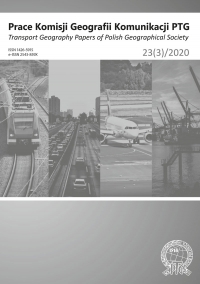Mechanisms of the overcoming the digital inequality of the population in Ukraine: interoperable governance, educational technologies of artificial intelligence and geoinformational startups
Mechanisms of the overcoming the digital inequality of the population in Ukraine: interoperable governance, educational technologies of artificial intelligence and geoinformational startups
Author(s): Oleksandr Valentinovich Karpenko, Anton Osmak, Yulia KarpenkoSubject(s): Geomatics, Public Administration, Vocational Education, Higher Education , ICT Information and Communications Technologies, Transport / Logistics
Published by: Wydawnictwo Uniwersytetu Jagiellońskiego
Keywords: digital governance; digital inequality; centers of interoperable governance; artificial intelligence; transportation geo-information startups;
Summary/Abstract: The article deals with the theoretical substantiation of the mechanisms of overcoming the digital inequality of the population in Ukraine, among which the main ones have been defined as follows: creation of interoperable governance systems, introduction of educational algorithms of artificial intelligence and application of geo-information technologies (startups). Digital inequalities are classified as technical, inclusive, educational and economic. It has been proven that digital education of the future must be based on individual contextual learning, which is based on technological capacity, inclusion and interaction of teachers and students within personalized curricula. It has been substantiated that there is the necessity to create in (or at) public authorities centers of interoperable governance – organizational and technological complexes of intellectually organized workplaces of public officials, experts-analysts and specialists-communicators who carry out modeling, analysis, forecasting, graphic visualization of the situation by means of digital software, technical and communicational tools to support decision-making based on neural network technologies and artificial intelligence algorithms. A model of interaction (movement) of informational and communicational flows and influences of a typical center of interoperable governance has been developed. The use of the visual representation of spatial data and digital services of geo-information systems is recommended on the example of the EasyWay startup, a digital logistics system of public transport routes to ensure the effectiveness of the centers of interoperable governance.
Journal: Prace Komisji Geografii Komunikacji PTG
- Issue Year: 23/2020
- Issue No: 3
- Page Range: 84-90
- Page Count: 7
- Language: English

